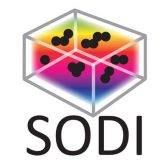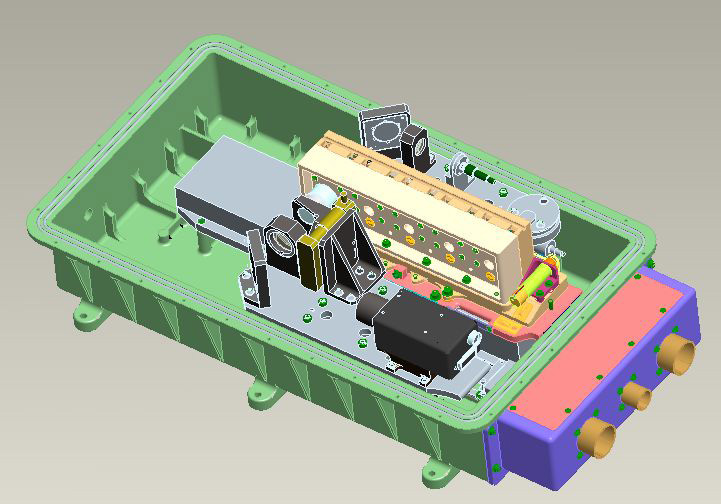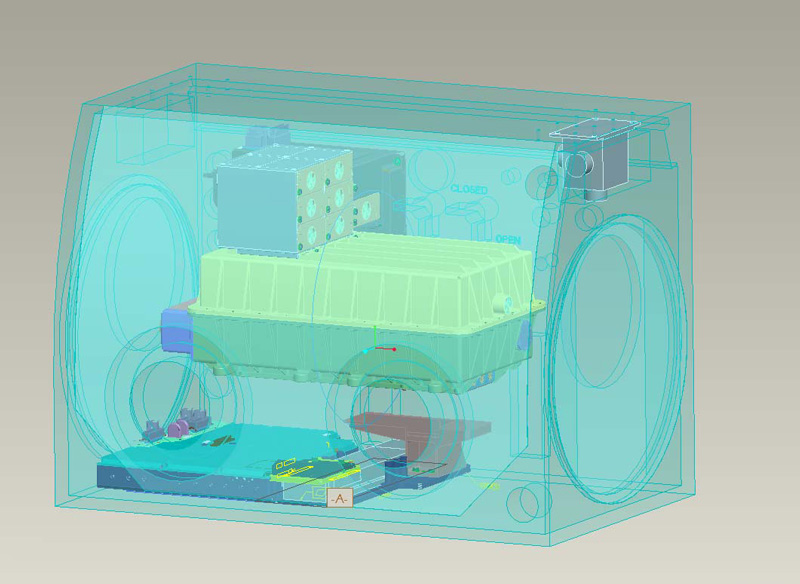SODI-COLLOID

After IVIDIL, SODI COLLOID came into play in 2010. This was the third experiment of the Selectable Optical Diagnostics Instrument (SODI) project, performed as well in the Microgravity Science Glovebox (MSG) rack, a National Aeronautics and Space Administration (NASA) facility.
Significant Dates
Mission STS-132: May 14, 2010
Mission STS-133: February 24, 2011
| COLLOID | COLLOID-2 | |
|---|---|---|
| First Experimental Run | September, 2010 | October, 2011 |
| Latest Experimental Run | October, 2010 | November, 2011 |
Experiment/Payload description
This experiment stems from the proposal “Advanced Photonic Devices in Microgravity” submitted in response to the International Announcement of Opportunity of 2000. As suggested by its title, the focus is on materials that have a special interest in photonics, with emphasis on nano-structured, periodic dielectric materials, known as photonic crystals, which possess appealing properties.For this reason, they are promising candidates for new types of optical components.
The building blocks are (often mixtures of) colloidal particles of micrometric dimension since the key property of photonic crystals lies in the periodic variation of the refractive index in two or three dimensions on a length scale that is equivalent to that of visible wavelength. The overall goal of the experiment is therefore to study the self-assembly of colloidal systems, trying to tackle the puzzling and still not fully understood mechanisms that lie behind, with the benefit of a reduced gravity environment.
Source: Qinetic
Specifically, this experiment is focused on a peculiar type of aggregation that allows a high degree of control, particularly suitable for space experiments. The system is composed of spherical colloidal particles suspended in a binary solvent mixture with a coexisting two-phase region. The interest of such a system arises in the fact that, in the homogeneous phase of the solvent, the adsorption of one of the liquid species depends on the temperature difference in the host phase separation line. The preferential adsorption of the liquid component on the colloidal particles weakens the repulsive electrostatic double layer, thereby modifying the colloidal stability. The effective interparticle interaction changes from repulsive to attractive as the region of coexistence of the two phases is approached. The advantage of this system is that the interparticle interaction is tunable by controlling a macroscopic parameter such as the temperature.
The basic scheme of the COLLOID experiment is to acquire NFS batches at different temperatures. Thanks to this, it is possible to follow the formation of aggregates and growing structures by a quantitative check of different features of the power spectra of the scattered radiation. In total 5 cells will be probed by NFS, grouped in an array. The NFS setup can be positioned in any of the 5 cells, probing 4 of them as experimental cells and one as a reference cell.
Different temperatures are studied for every cell, whose values depend on the sample composition. For each temperature, NFS batches and real space images are acquired as long as the system is undergoing a detectable change.
The experiment is divided in the following blocks:
-
“Aggregation Temperature Detection Run”, where the aggregation temperature and temporary duration are probed cell by cell. The decision of keeping the same temperature or going to the next temperature is made by the SODI COLLOID software comparing the quantities extracted from the images.
-
“Reference cell run”, where an NFS batch is acquired at different temperatures in the reference cell.
-
“Experiment run”, where the NFS batches are acquired during aggregation duration at the desired temperature. This forms the core part of the COLLOID experiment.
Source: Qinetic



